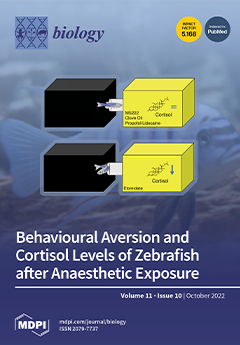The AP2/ERF transcription factor family is one of the largest transcription factor families in plants and plays an important role in regulating plant growth and development and the response to biotic and abiotic stresses. However, there is no report on the AP2/ERF gene family in almond (
Prunus dulcis). In this study, a total of 136
PdAP2/ERF genes were identified from the almond genome, and their protein physicochemical properties were analyzed. The
PdAP2/ERF members were divided into five subgroups: AP2, RAV, ERF, DREB, and Soloist. The
PdAP2/ERF members in each subgroup had conserved motif types and exon/intron numbers.
PdAP2/ERFS members are distributed on eight chromosomes, with 22 pairs of segmental duplications and 28 pairs of tandem duplications. We further explored the colinear relationship between almond and
Arabidopsis thaliana,
Oryza sativa,
Malus domestica, and
Prunus persicaAP2/ERF genes and their evolution. The results of
cis-acting elements showed that
PdAP2/ERF members are widely involved in various processes, such as growth and development, hormone regulation, and stress response. The results based on transcriptome expression patterns showed that
PdAP2/ERF genes had significant tissue-specific expression characteristics and were involved in the response of annual dormant branches of almond to low-temperature freezing stress. In addition, the fluorescence quantitative relative expression results of 13 representative
PdAP2/ERF genes in four tissues of ‘Wanfeng’ almond and under six low-temperature freezing treatments of annual dormant branches were consistent with the transcriptome results. It is worth noting that the fluorescence quantitative expression level showed that the
PdERF24 gene was extremely significant at −30 °C, suggesting that this gene may play an important role in the response of almond dormancy to ultralow temperature freezing stress. Finally, we identified 7424 and 6971 target genes based on AP2 and ERF/DREB DNA-binding sites, respectively. The GO and KEGG enrichment results showed that these target genes play important roles in protein function and multiple pathways. In summary, we conducted bioinformatics and expression pattern studies on
PdAP2/ERF genes, including 13 PdAP2/ERF genes, and performed fluorescence quantitative analysis of annual dormant shoots under different low-temperature freezing stress treatments to understand the tolerance of almond dormancy to freezing stress and suggest future improvements.
Full article






